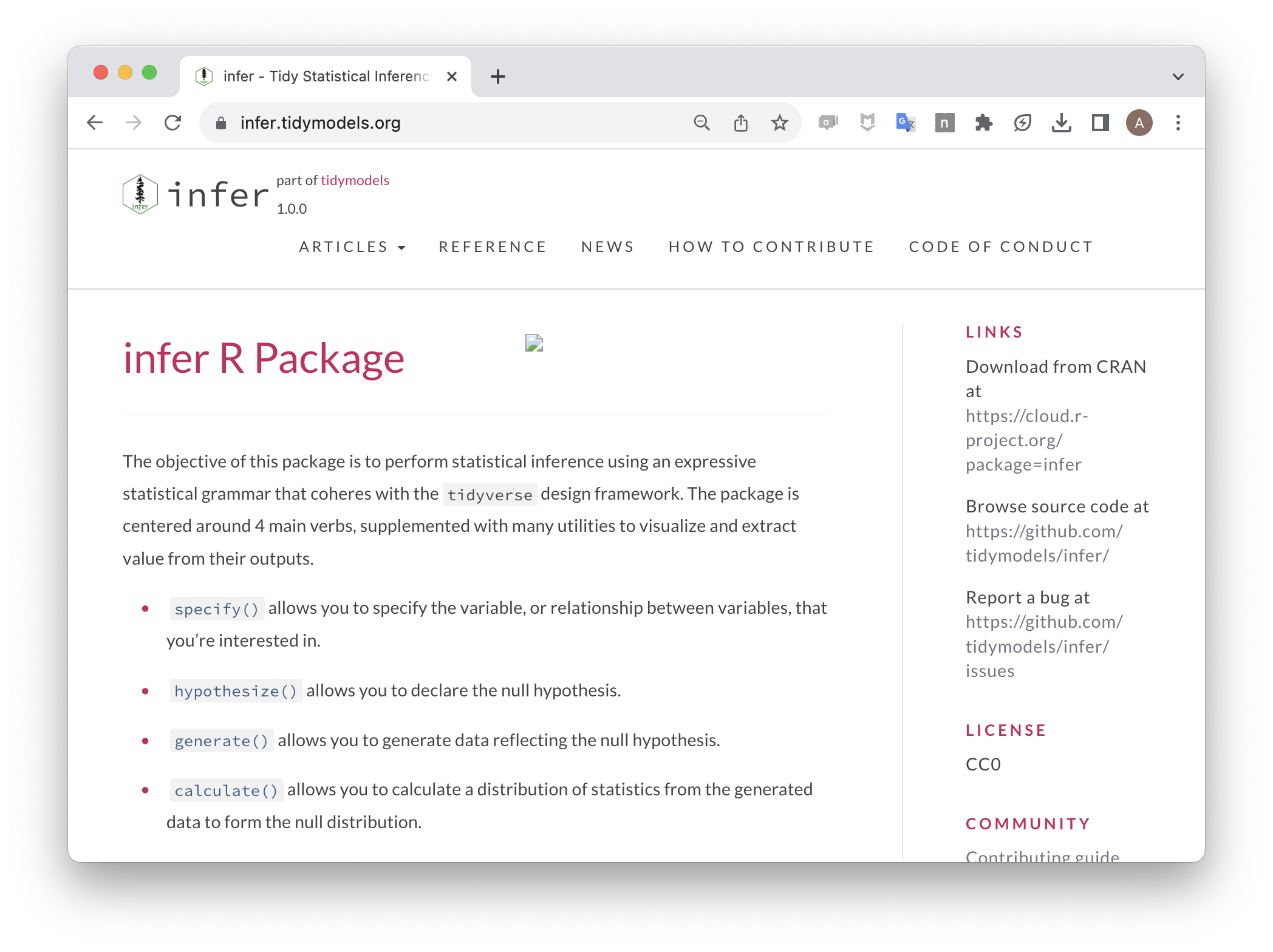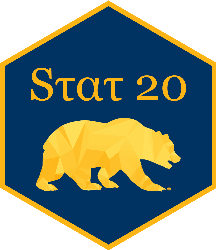| name | species | length |
|---|---|---|
| Gus | Chinstrap | 50.7 |
| Luz | Gentoo | 48.5 |
| Ida | Chinstrap | 52.8 |
| Ola | Gentoo | 44.5 |
| Abe | Adelie | 42.0 |
Bootstrapping
While you’re waiting
If you’ve been given an index card, please write on it:
- Your first name
- Your year at Cal (1 is first year, 2 is second year, etc)
- Whether or not you are interested in majoring in a business- or econ-related field. 1 = yes, 0 = no
Concept Questions
Which of these is a valid bootstrap sample?
01:00
| name | species | length |
|---|---|---|
| Ida | Chinstrap | 52.8 |
| Luz | Gentoo | 48.5 |
| Abe | Adelie | 42.0 |
| Ola | Gentoo | 44.5 |
| Ida | Chinstrap | 52.8 |
| name | species | length |
|---|---|---|
| Ola | Gentoo | 44.5 |
| Gus | Chinstrap | 50.7 |
| Ida | Chinstrap | 52.8 |
| Luz | Gentoo | 48.5 |
| Gus | Chinstrap | 50.7 |
| Gus | Chinstrap | 50.7 |
| name | species | length |
|---|---|---|
| Gus | Chinstrap | 50.7 |
| Ola | Gentoo | 48.5 |
| Ola | Chinstrap | 52.8 |
| Ida | Gentoo | 44.5 |
| Ida | Adelie | 42.0 |
| name | species | length |
|---|---|---|
| Gus | Chinstrap | 50.7 |
| Abe | Adelie | 42.0 |
| Gus | Chinstrap | 50.7 |
| Gus | Chinstrap | 50.7 |
| Gus | Chinstrap | 50.7 |
The Bootstrap
Parameters and Statistics
Our Goal: Assess the sampling variability in our estimate of the median year at Cal and the proportion of students in an econ-related field.
Our Tool: The Bootstrap
Collecting a sample of data
If you’ve been given an index card, please write on it:
- Your first name
- Your year at Cal (1 is first year, 2 is second year, etc)
- Whether or not you are interested in majoring in a business- or econ-related field. 1 = yes, 0 = no
boardwork
Bootstrapping with Infer
Example: Penguins
Let’s consider our 344 penguins to be a SRS from the broader population of Antarctic penguins. What is a point and interval estimate for the population proportion of penguins that are Adelie?
Point estimate
Generating one bootstrap sample
Response: is_adelie (factor)
# A tibble: 344 × 2
# Groups: replicate [1]
replicate is_adelie
<int> <fct>
1 1 FALSE
2 1 FALSE
3 1 TRUE
4 1 FALSE
5 1 TRUE
6 1 TRUE
7 1 FALSE
8 1 TRUE
9 1 TRUE
10 1 TRUE
# ℹ 334 more rowsTwo more bootstrap samples
penguins |>
specify(response = is_adelie,
success = "TRUE") |>
generate(reps = 1,
type = "bootstrap")Response: is_adelie (factor)
# A tibble: 344 × 2
# Groups: replicate [1]
replicate is_adelie
<int> <fct>
1 1 FALSE
2 1 TRUE
3 1 FALSE
4 1 FALSE
5 1 FALSE
6 1 TRUE
7 1 TRUE
8 1 FALSE
9 1 FALSE
10 1 FALSE
# ℹ 334 more rowspenguins |>
specify(response = is_adelie,
success = "TRUE") |>
generate(reps = 1,
type = "bootstrap")Response: is_adelie (factor)
# A tibble: 344 × 2
# Groups: replicate [1]
replicate is_adelie
<int> <fct>
1 1 FALSE
2 1 TRUE
3 1 TRUE
4 1 FALSE
5 1 FALSE
6 1 TRUE
7 1 TRUE
8 1 FALSE
9 1 FALSE
10 1 FALSE
# ℹ 334 more rowsVisualizing 9 bs samples
Calculating 9 \(\hat{p}\)
Response: is_adelie (factor)
# A tibble: 9 × 2
replicate stat
<int> <dbl>
1 1 0.404
2 2 0.430
3 3 0.404
4 4 0.433
5 5 0.468
6 6 0.448
7 7 0.427
8 8 0.413
9 9 0.474Note the change in data frame size.
The bootstrap dist (reps = 500)
Interval Estimate
We can extract the middle 95% by identifying the .025 quantile and the .975 quantile of the bootstrap distribution with get_ci().
# A tibble: 1 × 2
lower_ci upper_ci
<dbl> <dbl>
1 0.392 0.494Documentation: infer.tidymodels.org

Your Turn
Create a 95% confidence interval for the median bill length of penguins.
05:00
One-question checkin (THIS HELPS US IMPROVE THE COURSE)




